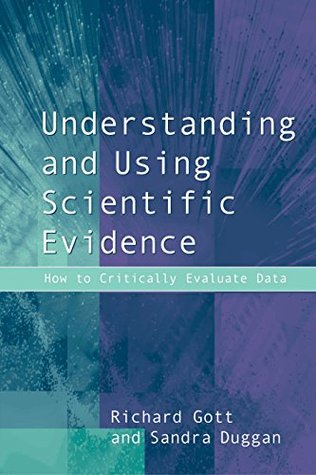Read Understanding and Using Scientific Evidence: How to Critically Evaluate Data - Richard Gott | PDF
Related searches:
Amazon.com: Understanding and Using Scientific Evidence: How
Understanding and Using Scientific Evidence: How to Critically Evaluate Data
Understanding and Using Scientific Evidence - SAGE Research
Science Fair Projects: Understanding and Using the Scientific
Understanding and Using Scientific Evidence SAGE
Understanding and Using Scientific Evidence : How to
How to read and understand a scientific paper: a guide for non
Science aims to explain and understand - Understanding Science
Science of the People: Understanding and using science in
Understanding Scientific Journals and Articles Process of
Scientific Guide to Understanding and Using TEG Power!
Using science to foster global understanding and peace Blog
The basic understanding which underlies scientific evidence - ideas such as the structure of experiments, causality, repeatability, validity and reliability.
Students, and sometimes even teachers, often think scientists only use the scientific method to answer science-related questions. In fact, you can apply the scientific method to almost any problem. The key is to use the elements (steps) to reduce bias and help come to a solution to the problem.
Within a scientific article, scientists present their research questions, the methods by which the question was approached, and the results they achieved using those methods. In addition, they present their analysis of the data and describe some of the interpretations and implications of their work.
Understanding and using the scientific method the scientific method is the backbone of every science experiment, and understanding it is critical to the success of your science fair experiment. Three different people can witness the same event, and each come up with a different account of how it occurred.
The basic understanding which underlies scientific evidence - ideas such as the structure of experiments, causality, repeatability, validity and reliability- is not straightforward.
My investigations lead to the characterization of scientific understanding of an empirical phenomenon as a cognitive ability to use knowledge and skills for grasping relations of the phenomenon and articulating them in form of new explanations of the phenomenon.
Most primary research papers will be divided into the following.
Science of the people: understanding and using science in everyday contexts helps answer these questions as the result of painstaking interviewing by professor joan solomon of all and sundry in a fairly typical small town. The result is a unique overview of how a very wide range of adults, united only by local geography, relate to science.
The impact of this course on student understanding of the nose was assessed through the use of views on science-technology-society (vosts).
The impact of this course on student understanding of the nose was assessed through the use of views on science-technology-.
Understanding and using the scientific method the scientific method is a process used to design and perform experiments. It's important to minimize experimental errors and bias, and increase confidence in the accuracy of your results. In the previous sections, we talked about how to pick a good topic and specific question to investigate.
The basic understanding which underlies scientific evidence - ideas such as the structure of experiments, causality, repeatability, validity and reliability- is not straightforward. But these ideas are needed to judge evidence in school science, in physics or chemistry or biology or psychology, in undergraduate science, and in understanding.
Present students with a more constructivist epistemology of science: one in which students develop an understanding that scientists hold theories that.
The teaching of science to undergraduates aligns poorly with the practice of science, leading many students to conclude that research is boring and researchers.
If you’ve ever had a great idea for something new, then you know some testing is necessary to work out the kinks and make sure you get the desired result. When it comes to developing and testing hypotheses in the scientific world, researche.
Scientific guide to understanding thermoelectric generators and teg products for converting heat to teg power! leave a reply the science (seebeck effect) behind thermoelectric generation is often referred to as, a phenomenon.
Understanding the scientific enterprise: a conversation with alan leshner.
Classically, science's main goal has been building knowledge and understanding, regardless of its potential applications — for example, investigating the chemical reactions that an organic compound undergoes in order to learn about its structure.
25 jan 2016 this article contributes to this aim with regard to research expertise in scientific disciplines.
A scientific question is the second step of the scientific method, in which an experimenter asks a question that can be answered by forming a hypothesis an a scientific question is the second step of the scientific method, in which an exper.

Post Your Comments: